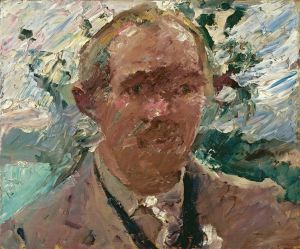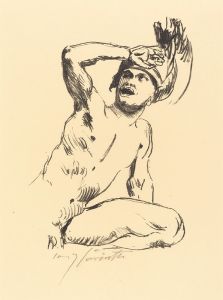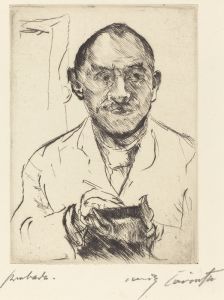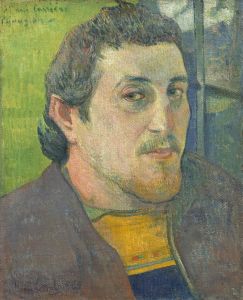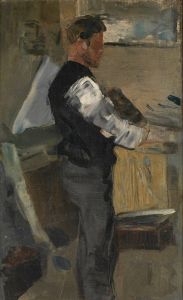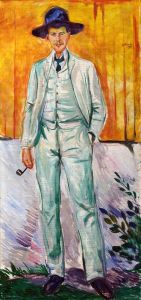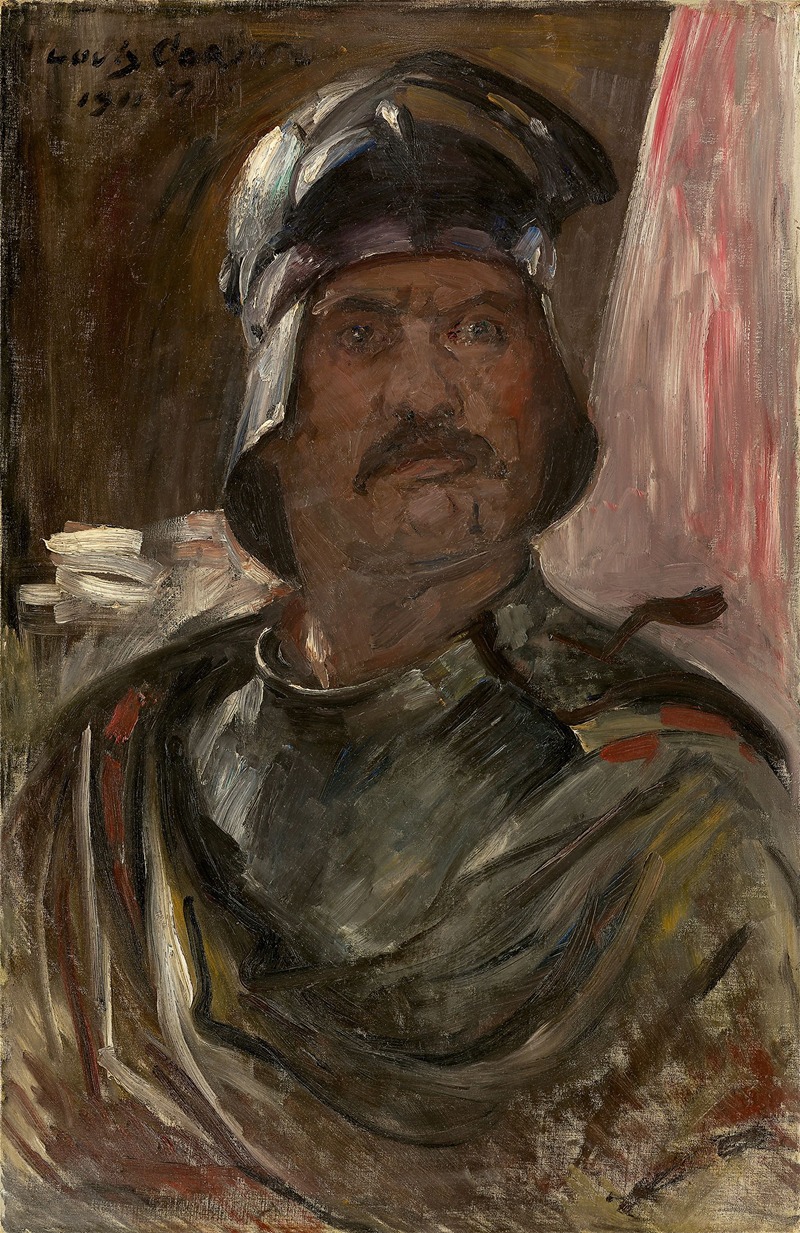
Selbstporträt im Harnisch
A hand-painted replica of Lovis Corinth’s masterpiece Selbstporträt im Harnisch, meticulously crafted by professional artists to capture the true essence of the original. Each piece is created with museum-quality canvas and rare mineral pigments, carefully painted by experienced artists with delicate brushstrokes and rich, layered colors to perfectly recreate the texture of the original artwork. Unlike machine-printed reproductions, this hand-painted version brings the painting to life, infused with the artist’s emotions and skill in every stroke. Whether for personal collection or home decoration, it instantly elevates the artistic atmosphere of any space.
Lovis Corinth's Selbstporträt im Harnisch (Self-Portrait in Armor) is a notable self-portrait created by the German painter in 1914. Corinth, a prominent figure in German Impressionism and later Expressionism, was known for his dynamic brushwork and psychological depth in portraiture. This painting is one of several self-portraits he produced throughout his career, reflecting his evolving artistic style and personal circumstances.
The artwork depicts Corinth dressed in a suit of armor, gazing directly at the viewer with an intense and contemplative expression. The choice of armor as attire is often interpreted as a symbolic gesture, though the exact meaning remains open to interpretation. Some art historians have suggested that the armor may reflect themes of strength, resilience, or a sense of self-protection, particularly given the historical context of 1914, the year World War I began. However, Corinth's specific intentions for this self-portrait are not definitively documented.
The painting showcases Corinth's mature style, characterized by bold, expressive brushstrokes and a rich, dramatic use of color. The metallic sheen of the armor is rendered with a striking interplay of light and shadow, demonstrating Corinth's technical skill and his ability to convey texture and materiality. The background is relatively subdued, ensuring that the focus remains on the figure of the artist himself.
Selbstporträt im Harnisch holds a significant place in Corinth's body of work, as it was created during a pivotal period in his life. In 1911, Corinth suffered a stroke that temporarily impaired his ability to paint. He eventually recovered and adapted his technique, which became more vigorous and emotionally charged in the years that followed. This self-portrait, painted three years after his stroke, reflects the artist's resilience and his continued exploration of identity and self-representation.
The painting is housed in the collection of the Städtische Galerie im Lenbachhaus in Munich, Germany. It remains an important example of Corinth's contribution to early 20th-century art and his ability to merge personal expression with broader artistic trends of his time.







